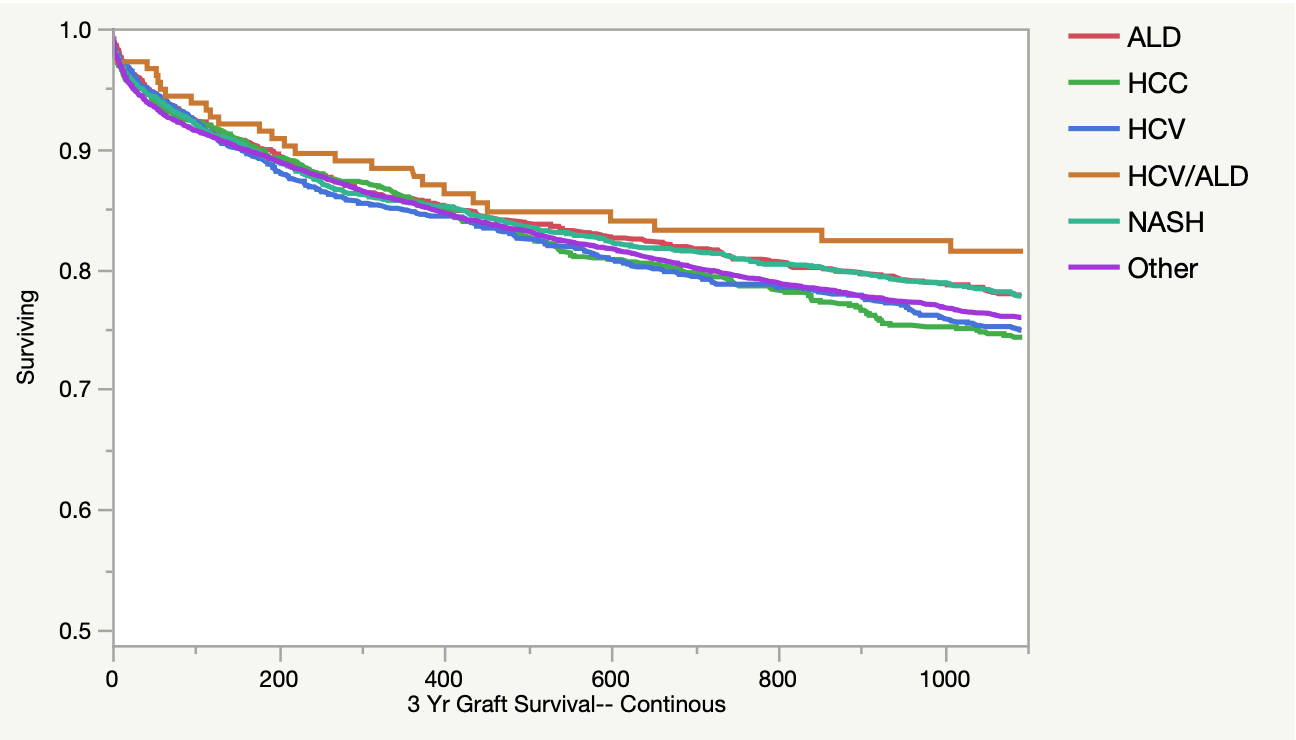NASH is the Leading Indication for Liver Transplantation in Elderly Patients
1Surgery, Cedars-Sinai Medical Center, Los Angeles, Los Angeles, CA, 2Hepatology, Cedars-Sinai Medical Center, Los Angeles, Los Angeles, CA, 3Gastroenterology, University of Texas Health- San Antonio, San Antonio, TX
Meeting: 2020 American Transplant Congress
Abstract number: A-174
Keywords: Elderly patients, Graft survival, Obesity
Session Information
Session Name: Poster Session A: Liver: Recipient Selection
Session Type: Poster Session
Date: Saturday, May 30, 2020
Session Time: 3:15pm-4:00pm
 Presentation Time: 3:30pm-4:00pm
Presentation Time: 3:30pm-4:00pm
Location: Virtual
*Purpose: Non-alcoholic steatohepatitis (NASH) is an increasingly prevalent cause of end-stage liver disease (ESLD) and indication for liver transplantation (LT) in the United States and around the world.
*Methods: United Network for Organ Sharing (UNOS) databases for waitlisted and transplanted patients were evaluated between 2006 and 2018. Pediatric patients (<18 years old) were excluded. Elderly recipients defined as ≥65 years old. Chi-square and Wilcoxon rank-sum analyses were used to compare groups. Logistic regression analyses were performed to assess likelihood of transplantation with odds ratios (OR) and 95% confidence intervals (CI) reported. Three-year graft survival was assessed with Kaplan-Meier (KM) survival analysis. P-values <0.05 were considered significant.
*Results: 129,839 patients were waitlisted for LT during the study period, of which 22,897 (14.9%) had NASH as primary diagnosis. Patients waitlisted with NASH were the oldest (median 60 years, IQR 54-65 years, p<0.0001), and predominantly male (n=12,091, 50.7%). NASH became the most common primary diagnosis amongst candidates >63 years old, at which point it accounted for 25.6% of waitlisted patients. Interestingly, NASH was the most common primary diagnosis amongst waitlisted women >59 years old, while in in men it did not become the most common until >69 years old. The median age at transplant for candidates with NASH was 64 years (IQR 59-67 years). NASH became the most common diagnosis amongst transplanted recipients >62 years old (>59 years old in women and >68 years old in men). Multivariable analysis showed that patients with NASH were more likely to be transplanted than those with HCV (OR 1.13, 95% CI 1.09-1.18, p<0.001) and ALD (OR 1.06, 1.01-1.11, p<0.001). Amongst elderly recipients, patients with NASH were more likely to be transplanted than those with HCV (OR 1.13, 1.07-1.18, p<0.001), but there was no difference between NASH and ALD (OR 1.03, 0.99-1.09, p=0.15). KM survival analyses showed no difference in 3-year graft survival across etiologies of ESLD overall, or amongst elderly recipients alone (see Figure).
*Conclusions: NASH is the most common indication for waitlisting and transplantation in elderly patients. Despite being a disease of the elderly, there is no difference in graft survival amongst recipients with NASH.
To cite this abstract in AMA style:
Steggerda JA, Yang J, Sundaaram V, Alkouri N, Ayoub W, Kim IK, Noureddin M. NASH is the Leading Indication for Liver Transplantation in Elderly Patients [abstract]. Am J Transplant. 2020; 20 (suppl 3). https://atcmeetingabstracts.com/abstract/nash-is-the-leading-indication-for-liver-transplantation-in-elderly-patients/. Accessed July 18, 2025.« Back to 2020 American Transplant Congress

